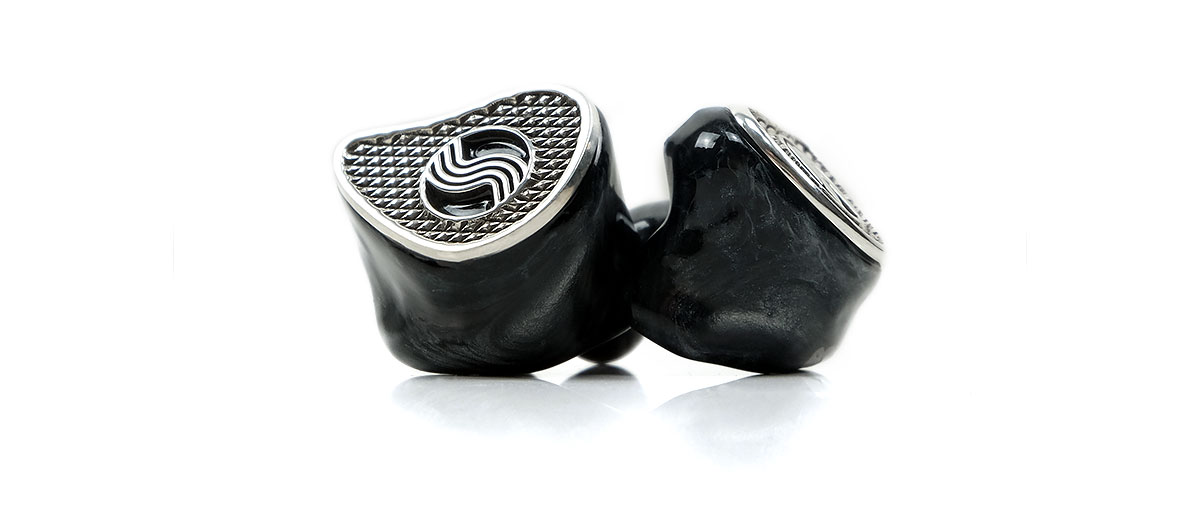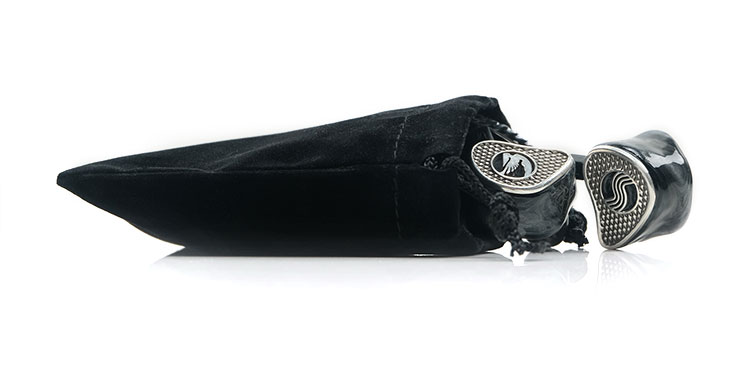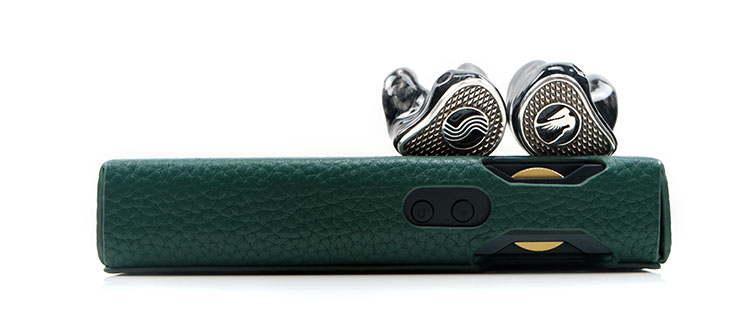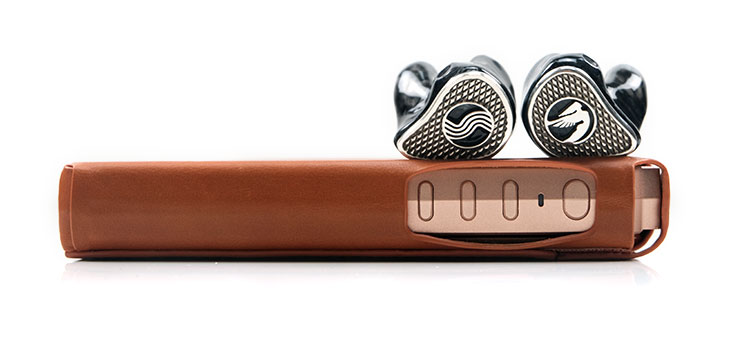Sound Impressions
Summary
The JH Audio Sharona is a gorgeously smooth sounding, detailed, and surprisingly weighty sound signature for a BA monitor. That quad pack of woofers digs out a mean low with some impressive extension for a BA monitor.
The tuning also bucks the FR pattern of recent big-ticket releases including the Jolene and the Layla with a much stronger midrange presence and some improved headroom in the highs. If you enjoy a good set of pipes in your recordings the Sharona does a good job upping the pinna gain to tease out some very sibilant free vocal performances.
The spaciousness within the soundstage is seriously impressive and again I refer to what seems that 180-degree U-turn on pushing forward the 2-4k range as opposed to keeping it more neutral or slightly dipped. The Sharona staging is stretched with a very holographic presentation and right up to and beyond that airy 10k marker.
Tonally, the Sharona errs to the even harmonic and euphonic side of the spectrum and clearly been designed for very long listening sessions. It has bags of micro-detail but it will not push hard on the treble presence avoiding listener fatigue in the process. For a roadie or a pro specialist that is an ideal sound signature for many hours on the decks during multiple-hour shows.
Frequency Response
The Sharona FR is quite different to me from the Layla or the Jolene. Instead of a stronger mid-treble peak at 7-8k, it instead opts for a bump closer to 10k allowing JH Audio to increase the 2-4k range without picking up any abrasiveness from its tweeter and super tweeters.
The Jolene and the Layla 2-4k region is a bit flatter so whilst it might have a shade more bite to its coloration it is not as fulsome sounding and imaging a bit further back in the mix. The Sharona 2-4k push creates a much stronger center image, especially for female vocals with a smaller 1-2k bump for chest voice performances to carry some weight also.
That treble extension is subtle though. It is slightly secondary to the upper-mids bump so you get plenty of air, much more so than previously reviewed JH Audio monitors but it is not massively amplified to bring the sparkle with it so it is not a bright top-end. Rather, it is airy but smooth and relaxed in its curve.
The low-end is sub-bass biased with a gentle and very linear L-shaped drop into the lower mids. It is not as scooped as the Jolene in the upper bass from 250Hz to 500Hz so it carries a bit more warmth but equally so it’s not quite as heavy-hitting sub-100Hz.
Those Jolene dynamic drivers carry some serious heft so keeping them properly phased is critical. The Sharona woofers, on the other hand, sound a bit tighter and faster and not overly exaggerated. I doubt you will miss tweaking the lows if you go with the T2 connection system with a degree of amplitude similar to approximately 12-2 pm on the bass module.
Timbre
The Sharona timbre is smooth and creamy in its coloration with a dash of euphony but without ever stepping onto romanticism or sounding overly lush.
The beauty of this tuning is the amount of space and air in its presentation of which there is plenty. That allows each fulsome sounding note to linger and decay without any congestion using instruments on top of each other blurring its lines.
This is a smear and veil-free presentation but on the flip side, this is not timbre with a huge amount of sparkle or upper harmonic order bias.
The upper treble bump at around 10k ensures there is plenty of headroom in the Sharona performance but at the same time, the upper mids bump does not catch any sharp overtones that carry unwanted sibilance in vocals or splashy lean-sounding percussion hits.
It also means the overall harmonic balance is even biased with plenty of body but also with a slightly rounded feel to instrumental notes. The fundamental is also very good indeed so lower pitching notes do sound convincingly weighty and firm for a BA monitor.
Staging & Dynamics
The sense of space and the complexity of the imaging from the Sharona are superb. This is a huge soundstage with excellent width combined with a detailed and clear vocal performance.
The Sharona midrange also delivers a comparatively stretched and enhanced 3D-like staging quality compared to JH Audio’s competing flagship-level monitors which tended to leave the mids voicing more in neutral gear.
The Sharona’s top-end is relaxed in terms of treble sparkle but still extends really well creating plenty of headroom which in turn allows that 2-4k range to breathe. Nothing sounds congested which is just as well as the smooth timbral performance could easily have come off as a bit cramped if JH Audio has focused on pumping up the lower treble instead.
Depth is well above average for a BA monitor though it does not quite convey the style of mid-bass punch you get from the Layla, opting instead for a stronger sub-bass lift.
There also seems to be slightly less upper bass bloom compared to the Layla though that could be a slightly false perception given the Layla mids do not have the same pinna gain level from 2-4k.
Synergy
Efficiency
The JH Audio Sharona is rated at 16Ω and 114dB SPL. As such, it’s not the most challenging monitor to drive well from moderate sources. Unfortunately, since this Sharona sample came with a T2 SE 3.5mm TRS jack only I cannot tell you how well it performs from balanced outputs. You can of course buy it also with a 2.5mm and 4.4mm balanced connection online.
However, from SE connections on 5 DAPs and 2 dongles, no noise was detected. All of them delivered a very black background with a 3.5mm TRS connection. That includes reference level players such as the LP P6 Pro and the FiiO M17 down to dongles such as the Cayin RU6 and the LP W2.
Ranges against the alternative JH Audio choices there isn’t a huge deviation in current or voltage requirements with the Layla, Contour XO, and Jolene only deviating by 1-2dB below or above the Sharona volume setting for comfortable listening sessions. JH Audio has been very consistent with its power requirements across most of the monitors that I have tested to date.
Pairings
The JH Audio Sharona was tested with the following sources: Luxury & Precision P6 and P6 Pro, HiBy RS6 & R8, Cayin N6ii/R01, Cayin RU6, Luxury & Precision W2, and the iBasso DX240.
In most instances I found myself gravitating to a cleaner sound signature with an excellent dynamic range rather than a warmer or smoother tuning.
R-2R Realism
For example, the LP P6 is a beautifully smooth analog-sounding R-2R DAP but given that the Sharona already possesses a very smooth tuning it can feel almost too relaxing. It is a fantastic pairing for vocal lovers with zero sibilance and euphony by the bucketload.
However, the P6 Pro’s more reference-like qualities combined with a slightly more neutral tuning and improved bass punch on the low-end gave the Sharona a huge lift in terms of dynamics and realism.
You still will not get anything in the way of harmonic dissonance or sibilance from the Sharona but you do get a bit more treble presence and extension which colors the timbre in a more accurate manner.
Based on that I was expecting the N6ii/R01 to be a similar performer but in reality, the mids to highs were not quite as impressively textured and full sounding. Slight thinness crept into the Sharona note weight combined with a boomier low-end that didn’t feel as balanced as the P6 Pro pairing.
Still, I preferred it to the RS6 pairing which was overly warmed up in the lower mids and did not offer the same amount of staging space to really capitalize on the excellent imaging from the Sharona. It sounds very slick though for simple mixes with vocals to the fore and did indeed offer a better midrange body compared to the thinner Cayin R01.
Delta Sigma Clarity
The M17 was also an excellent pairing. Not quite as textured as the P6 Pro but its cooler sound signature and very punchy bass response opened up the Sharona quite nicely in terms of staging space and headroom. I got a similar clean and airy performance from the DX240 though not quite as dynamic sounding as the M17.
Dongles
I could go either way with our two tested dongles and honestly, it just comes down to a mood or preferences. The W2 is a bit drier and more digital sounding but has that cleaner punchier sound that I like with rock music.
The Cayin RU6 was smoother in timbral coloration when paired with the Sharona and often delivered a slightly longer decay on the notes with a warmer overtone. It certainly sounded the more natural of the two dongles but perhaps not clinical enough for intricate rock guitar work.
The RU6 excels though for vocals, sounding very analog and very smooth. I did feel it really took advantage of Sharona’s improved midrange tuning so if you are a vocal lover this is an excellent pairing. I would take the W2 though if you wanted a slightly cleaner more precise sound from the Sharona.








